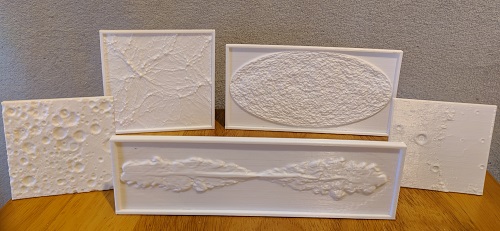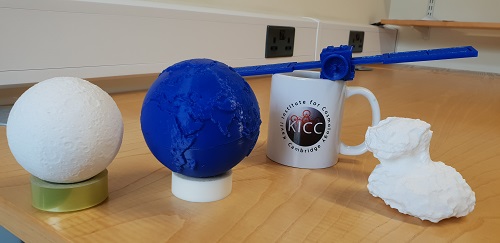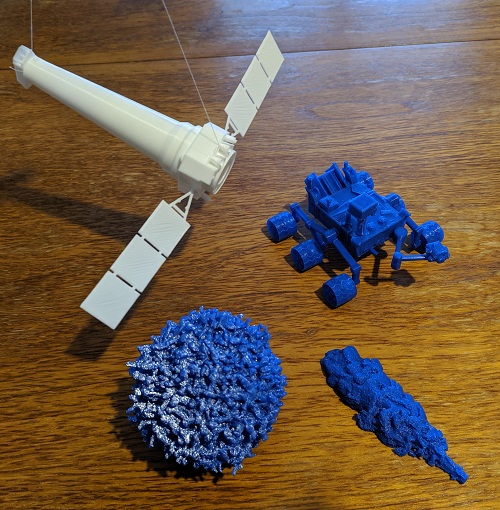Activities for visually impaired people
Astronomy outreach is often presented using images from telescopes. As such, people with visual impairments are generally underserved by traditional astronomy outreach programs.
In order to improve the accessibility of our outreach program, The KICC has acquired a 3D printer, and we are in the process of designing a range of activities for young people which will utilise 3D models. We are currently designing a series of classroom sessions relating to Kavli research themes (ranging from our own solar system, the search for life in the Universe, to the formation of galaxies and the structure of the cosmos), which will combine our 3D printed models with multi-sensory information, such as data sonification, in order to communicate the excitement of astronomy in a fully accessible way.

For young children, we are planning a touchable Solar System in two parts : (i) printed models of planets and satellites to allow children to feel the difference between things like Mars and the Earth, the two faces of the Moon, or between Venus and Europa; (ii) a scaled version of the Solar System to let the children experience the distance between the eight planets of our solar system. We will also take advantage of the huge amount of sounds from the Solar System (either a sound translation of the radio emission from a planet or a direct record from the ground of the planet) to offer another way to understand the difference between each planet.

To show areas of active research, using a process developed by the Tactile Universe project we have begun converting images from KICC researchers (e.g. a full 3D rendering of the gaseous jet from an Active Galactic Nucleus) into physical models, converting 'pixel brightness' from the image into the 'height' of the 3D model, so that the image can be interpreted by touch alone. In addition, we are using the galaxy images provided by the Tactile Universe project, and are also printing a collection of tactile images representing key aspects of astronomy (e.g. the CMB and the cosmic web, and the Tycho supernova remnant from the Chandra X-ray Observatory). In addition to the models themselves, we are compiling a set of instructions so that any Institute member can easily produce a model of their current work.

We are planning to release all models and sounds we create and use on a public website to allow schools across the country to develop their own activities.
Nicolas Laporte, Colin DeGraf, Matt Bothwell


